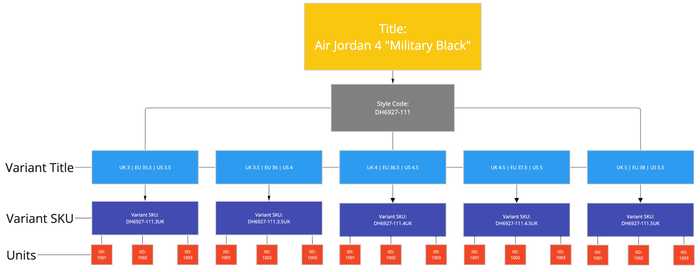I had the great pleasure of speaking at the Pulse Ecommerce Summit '23 hosted by Vervaunt
I was joined by Andrew Showman Founder & CTO @ CurrentBody and Lauren Muir - Product Owner @ Oh Polly Hosted by Luke Hodgson @ Commerce Thinking
Our Panel discussion was on Technology & Roadmapping, and I thought I would share some of the high level topics that I touched upon.
What was your "Oh Shit" moment that was a big catalyst for change in your tech strategy
The initial solution for our e-commerce requirements at Kick Game was sourced from an open-source platform known as OpenCart. However, during the nascent stages of our business, it became evident that OpenCart lacked the robustness necessary for scaling our operations, particularly when venturing into an omnichannel business model. Consequently, we transitioned to using Shopify Plus and Shopify POS for our retail stores.
Secondly the primary challenge we faced in the competitive landscape was the necessity for substantial capital to develop a bespoke solution, while simultaneously striving to compete with well-funded industry counterparts. Upon securing adequate financial resources, we promptly embarked on constructing our platform to facilitate a genuine marketplace experience for buying and selling via Shopify.
Kick Game is a true commerce business, it trades DTC, through physical retail stores and has built a two sided marketplace. You’ve innovated a lot to balance these demands… Can you explain what your PIM does that off the shelf solutions never could?
Over the preceding triennium, our efforts have culminated in the construction of a comprehensive system that seamlessly integrates a Product Information Management (PIM) system, a Warehouse Management System (WMS), and a Marketplace Platform. While there are numerous standalone solutions available that can competently perform each of these functions, none are capable of performing them in concert in a manner that adequately addresses our distinct business needs. One of our most challenging tasks involves managing serialized inventory, which necessitates the individual tracking of each item.
To illustrate this point, consider a scenario involving a Nike shoe available in various sizes. Suppose there are 500 different sellers all vying to sell the exact same size 8 variant at different prices. The inherent architecture of Shopify is limited to processing a single price for a variant.

This complexity necessitated the development of a sophisticated mechanism for managing queues and prioritizing inventory.
What’s your view on who should be involved in prioritising a tech roadmap? Who decides what is done and when?
In my opinion, the prioritisation of a technological roadmap necessitates the collaborative involvement of all functional areas within the business. This should encompass departments such as Finance, Operations, Marketing, Customer Service, and beyond. Upon gathering insights from these various departments, the Chief Technology Officer (CTO) should engage in discourse with the Senior Leadership Team to assess and reach consensus on the initiatives of utmost significance for the business. Subsequently, the CTO should present these prioritised ideas to the Engineering team to ascertain their feasibility, as well as evaluate the requisite resources and capacity necessary for their execution.
How do you measure performance of technology as a function? How is tech targeted?
The assessment of technological performance within our organization is contingent upon the specific technology under consideration. Generally, we employ a range of Key Performance Indicators (KPIs) tailored to each individual service.
For instance, one such KPI might be the speed or load time of a platform or service. Our approach to performance measurement is comprehensive and considers multiple factors. A significant resource that has proved invaluable to our evaluation process is our user feedback portal. This platform allows our users to upvote and propose ideas, providing us with direct and invaluable insight into user experiences and needs.
Moreover, we utilize sophisticated error monitoring tools such as Sentry, which provide precise insights into both frontend and backend processes. These tools are crucial in detecting and analyzing aspects such as error occurrences and slow queries, enabling us to continually enhance and refine our technology performance.
What does the future of your custom build platforms look like?
At present, our Custom Product Information Management (PIM) & Inventory Management platform is robust and meets our needs effectively. However, my ongoing focus is centered around the key areas of functionality, performance, and scalability. Consequently, I envision a future where we consistently enhance and optimize our platform while incorporating progressive improvements, such as the development of our Mobile App.
Furthermore, we are investigating the potential for white labelling and licensing our software to other businesses. This would broaden the reach and applicability of our platform beyond our internal operations. This would include the transformation of our architecture into a multi-tenant system, an upgrade that could increase efficiency and resource-sharing capabilities.
How you’re prioritising work and reach concrete decisions is standout, can you explain the cadence of meeting and communication you have internally?
Our strategy for prioritising work and making concrete decisions is kept straightforward. Each day commences with a succinct stand-up meeting, where the team shares updates on their current tasks, along with any potential obstacles or impediments that may exist. This discussion is kept succinct and direct to ensure optimal efficiency. Following this meeting, I use the information gathered to update our Linear Board, a tool we utilise for comprehensive product and project management.
Additionally, on a monthly basis, we convene for an in-depth strategic session. This forum is dedicated to a more nuanced discussion of specific projects, the feedback we have received, any challenges we are confronting, and ways to enhance our collective productivity. Through this consistent and effective communication cadence, we maintain a high degree of clarity and alignment within our team.




